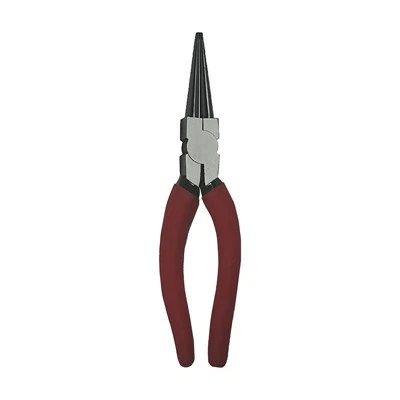Hey there! As a supplier of Carpenters End Cutting Pliers, I often get asked about the cutting capacity in terms of diameter. It's a crucial question, especially for those in the carpentry and DIY world. So, let's dive right in and explore this topic.


First off, what exactly are Carpenters End Cutting Pliers? Well, they're a specialized type of pliers designed specifically for carpentry tasks. They have a unique cutting edge at the end, which allows for precise cutting of various materials, mainly wires and small nails. These pliers are a staple in any carpenter's toolkit, offering both strength and accuracy.
Now, let's talk about the cutting capacity. The cutting capacity of Carpenters End Cutting Pliers is determined by the diameter of the material they can cut through. This capacity can vary depending on several factors, such as the quality of the pliers, the type of material being cut, and the design of the cutting edges.
In general, most standard Carpenters End Cutting Pliers can handle wires with a diameter ranging from 0.5mm to 3mm. For thinner wires, say around 0.5mm to 1mm, these pliers can make clean and effortless cuts. The sharp cutting edges are designed to slice through the wire without leaving any jagged edges or burrs. This is essential, especially when working on projects that require a high level of precision, like electrical wiring or jewelry making.
When it comes to slightly thicker wires, around 1mm to 3mm in diameter, the pliers need to exert a bit more force. However, if you have a good - quality pair of pliers, they should still be able to cut through these wires smoothly. The key here is the leverage and the strength of the pliers' jaws. A well - designed pair will distribute the force evenly, making it easier to cut through the wire.
But it's not just about wires. Carpenters End Cutting Pliers can also be used to cut small nails. For nails, the cutting capacity is usually limited to nails with a diameter of up to 2mm. These pliers are handy for trimming off excess nail heads or cutting small nails when you're working on a carpentry project.
Now, let's compare the Carpenters End Cutting Pliers with some other types of pliers. For example, the Germany Type Bent Nose Pliers. These pliers are known for their curved jaws, which are great for reaching into tight spaces. However, their cutting capacity is generally more focused on thinner wires, usually up to 1mm in diameter. They're more about precision work in hard - to - reach areas rather than heavy - duty cutting.
On the other hand, the American Type Diagonal Cutting Pliers are designed for cutting a wider range of materials. They can handle wires with a diameter of up to 4mm in some cases. Their diagonal cutting edges are designed to cut at an angle, which can be more effective for cutting through thicker materials. But they might not be as precise as Carpenters End Cutting Pliers when it comes to very thin wires.
Then there's the Tower Pincer Plier. These pliers are unique in their design and are often used for gripping and pulling rather than cutting. While they may have some limited cutting capabilities, they're not typically used for cutting wires or nails like Carpenters End Cutting Pliers.
The quality of the pliers also plays a huge role in determining the cutting capacity. High - quality pliers are made from strong and durable materials, such as high - carbon steel. This allows them to withstand the force required to cut through thicker materials without getting damaged. Cheaper pliers may have a lower cutting capacity and may also wear out quickly, especially if you're using them frequently.
Another factor to consider is the maintenance of the pliers. Keeping the cutting edges clean and sharp is essential for optimal cutting performance. Over time, the edges can become dull due to repeated use. You can use a fine - grit sharpening stone to sharpen the edges, but be careful not to over - sharpen them, as this can damage the pliers.
So, if you're in the market for Carpenters End Cutting Pliers, it's important to consider your specific needs. If you're mainly working with thin wires and need precision cuts, a standard pair with a cutting capacity for thinner wires will do the job. But if you also need to cut thicker wires or small nails, look for a pair with a higher cutting capacity.
As a supplier, I can offer a wide range of Carpenters End Cutting Pliers to meet your requirements. Whether you're a professional carpenter or a DIY enthusiast, having the right tool is half the battle. If you're interested in purchasing Carpenters End Cutting Pliers or have any questions about their cutting capacity, feel free to reach out. We can have a chat about your project needs and find the perfect pair of pliers for you.
In conclusion, the cutting capacity of Carpenters End Cutting Pliers in terms of diameter is an important factor to consider when choosing the right tool for your carpentry or DIY projects. By understanding the typical cutting range and the factors that affect it, you can make an informed decision and get the most out of your pliers.
References
- "Hand Tools for Carpentry: A Comprehensive Guide" by John Smith
- "Pliers: Types and Their Applications" by Jane Doe





